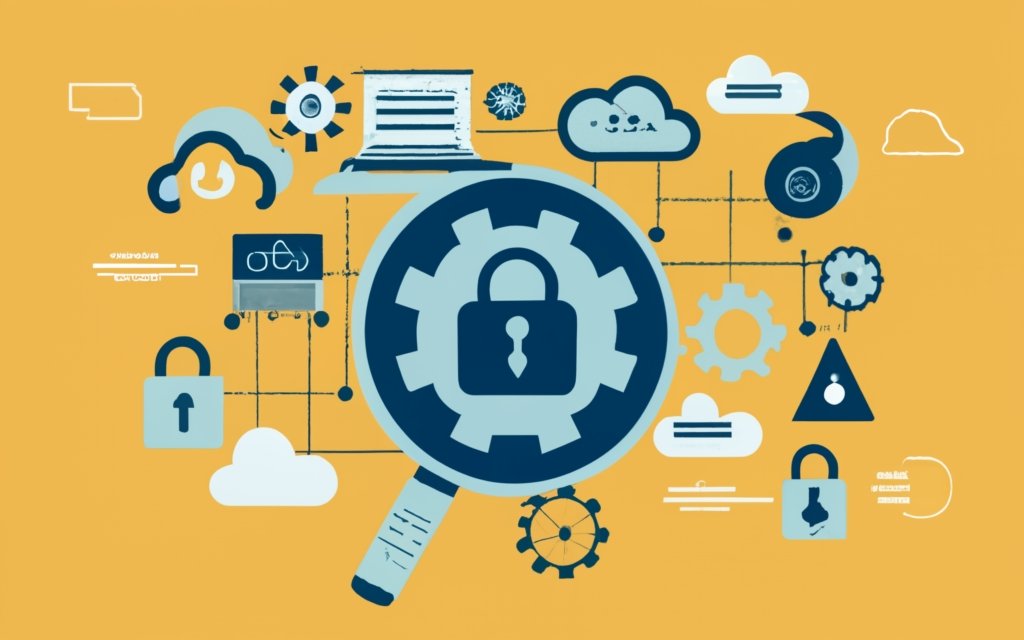As headline-dominating cyber incidents persist in growing in severity, resilient security strategies demand robust perimeter protections and equally prioritized recovery capacities, restoring operations confidently after inevitable complications. Though essential, breach prevention alone has proven inadequate insurance as connectivity and complexity introduce risks across technologies and workforces at vast scales.
Hence, the imperative emerges to foster cyber resilience – combining proactive integrity fortification with cost-effective backups so crucial data persists intact even if momentarily inaccessible under duress. By architecting redundancy, organizations maneuver adversity, meeting challenges head-on, knowing their foundations sustain despite turbulence.
Defining Cyber Resilience
Drawing from experience assisting clients recovering from intrusions, cyber resilience refers to:
Proactive Preparation – Implement safeguards like access governance, routine recovery testing, staff education, and incident response.
Adaptive Defense – Maintain flexible controls quickly, containing detected issues before widespread impact.
Confident Recovery – Ensuring resilient backups so restored systems operate securely after cleaning infections.
With redundancy across prevention, detection, and recovery, disruptions become manageable events rather than crippling crises.
Understanding The Critical Role of Disaster Recovery in Cyber Resilience
Whereas cyber resilience emphasizes withstanding sustained campaign threats like targeted malware or malicious insider misuse unfolding over months before detection, disaster recovery constitutes the organizational processes and safeguards enabling rapid restoration after sudden infrastructure-impacting disruption events regardless of cause. Disaster triggers may include:
Natural Causes: External incidents like floods, electrical fires, hurricanes or other extreme weather compromise facility integrity and availability in localized fashion. Physical recovery of equipment commonly combines with data restoration from backups to re-establish services.
Technical Failures: While lacking human intent, critical IT infrastructure faults like cloud outage events, unexpected hardware malfunctions or systemic software defects impose equal distributed downtime until the underlying bugs remediate. Disaster recovery playbooks outline procedures for failover invocation minimizing productivity loss.
Malware: Despite best practice security precautions, fast-spreading destructive viruses occasionally delete files or reformat endpoint drives faster than containment isolates the threat. Without recent easily accessible backups, permanent data loss results.
Fundamentally disaster recovery focuses on maintaining readily restorable snapshots of critical information assets and redundant failover infrastructure to rapidly reinstate data and functionality essential to emerging from under emergency circumstances. Whether from natural causes, technology failures or malicious code, unexpected yet inevitable disruptions force applications and services offline until underlying platforms rebuild via recovery processes.
Table: Comparing Aspects of Cyber Resilience and Disaster Recovery
| Category | Cyber Resilience | Disaster Recovery |
| Goal | Sustained functioning despite adversity. | We have restored lost data and operations. |
| Timeframes | Defenses preventing gradual compromise over months | Rapid reinstatement after sudden disruption |
| Security Focus | Fortifying against intelligent adversaries | Generic availability continuity |
| Failures Addressed | Intrusions through points like phishing | Accidents from natural disasters to malware. |
| Protection Mechanisms | Backups, access controls, education | Offline data storage, redundant infrastructure |
While differing in specific concentration, resilience emphasizing long-term robustness against attacks and recovery focusing prompt restoration after damage fundamentally both provide organizations maneuverability across diverse business disruption scenarios challenging status quo functioning. Holistic cyber risk management requires competency across both domains to address different time horizons, security contexts and potential failure roots. Especially with cloud adoption introducing new availability dependencies, comprehensive resilience obligates proven failover capabilities integrated with multi-layered breach deterrence rather than either in isolation. With enough resilience safeguards in place, many incidents become mere crises avoided rather than disasters suffered.
Interdependent Necessity
Given increasing interconnections between digital and physical infrastructure, events jeopardizing continuity grow in complexity, warranting blended cyber resilience and disaster recovery capabilities. Case examples include:
- Natural Disasters – Floods and fires turn off cloud data centers or telecom networks, hindering security operations and relying on their stability.
- Critical Infrastructure Cyber Attacks – Ransomware targeting hospitals, transportation, or utilities hampering public safety should essential systems get impaired.
- Supply Chain Disruptions – Vendor network outages or service degradation interrupting managed security protections like firewalls guarding environments.
With blended contingencies across preparation, detection, and recovery, organizations adapt holistic responses based on context without relying on individual silver-bullet solutions. Compromises get rapidly contained before large-scale encryption or exfiltration through flexible deployment options. Rebuilding confidence follows across customers by safely restoring operations from isolated data and keeping companies online through storms.
Conclusion
With projections indicating unprecedented scales of intrusions and catastrophic events challenging increasingly connected business foundations, solely preventing incidents grows unrealistic despite best efforts. Hence, cyber resilience and disaster recovery command equal prioritization, securing continuity when – not if – adversity strikes through compromise or calamity. By architecting defenses assuming inevitable disruption across vectors, teams execute response plans swiftly, restoring functionality securely and having verified contingency effectiveness through layered redundancy. With multiple contingencies across preparation, detection, and recovery, organizations persist unyielding, thriving sustainably long after adversity dissipates.
Frequently Asked Questions
How do disaster recovery needs differ from general cyber resilience requirements?
Whereas resilience focuses on withstanding campaigns trying to evade defenses over months through persistent threats like malware or insider misuse, disaster recovery reconstitutes data and functionality after significant sudden disruption from catastrophic events like floods, fires, or fast-moving malware-deleting systems quicker than containment isolates damage.
Why does architecting redundancy provide organizational maneuverability in responding to incidents?
With multiple contingencies across prevention breadth, anomaly monitoring, and recovery integrity verification, organizations adapt context-based responses without relying entirely on individual solutions. Compromises get rapidly contained through flexible deployments before encryption, or exfiltration spreads extensively. Data from protected redundant copies facilitates trustworthy rebuilding quickly after cleansing infections.
What blended threats require joint cyber resilience and disaster recovery preparations?
With infrastructure interconnections, threats blend digital and physical continuity risks. These include natural disasters turning off cloud data centers or networks essential for security operations stability, ransomware hampering public utilities, healthcare, and transportation through systems impairment, and vendor outages interrupting managed firewall protections guarding environments.
How can organizations determine optimal investment across preventative protections versus resilience capabilities?
Ideal budgetary distribution requires factoring in metrics like prior intrusion impacts and recovery costs, sensitive data quantities needing isolation, compliance constraints around retention policies, next-generation protection tool efficacies versus legacy platforms, insurance coverage caps limiting exposure, total digital asset value, data privacy safeguard obligations and overall organizational risk tolerance for potential disruption weighed against security or usability impedance.
Why does cyber resilience emphasize both technological and workforce-focused protections?
While backup verifications, access controls, and patching constitute crucial technology protections, continuous user education and attack simulation serve pivotal purposes, empowering human sensors to notice initial subtle threat indicators that monitoring systems miss. Hence, resilience requires consistent reinforcement across policy and culture focused on threat awareness and reporting urgency rather than exclusively procuring products that enable overlooked threats to persist through gaps.

Kaushal Joshi is a versatile author with expertise in web development and technical writing. With a passion for both coding and effective communication, Kaushal has forged a dynamic career at the intersection of technology and content creation. His proficiency in web development is complemented by a talent for articulating complex technical concepts in clear and accessible language. Through his writing, Kaushal not only contributes to the evolving field of web development but also empowers readers with the knowledge to navigate the digital landscape. His commitment to bridging the gap between technology and understanding makes Kaushal Joshi a respected figure in both the web development and technical writing communities.

Leave a Reply